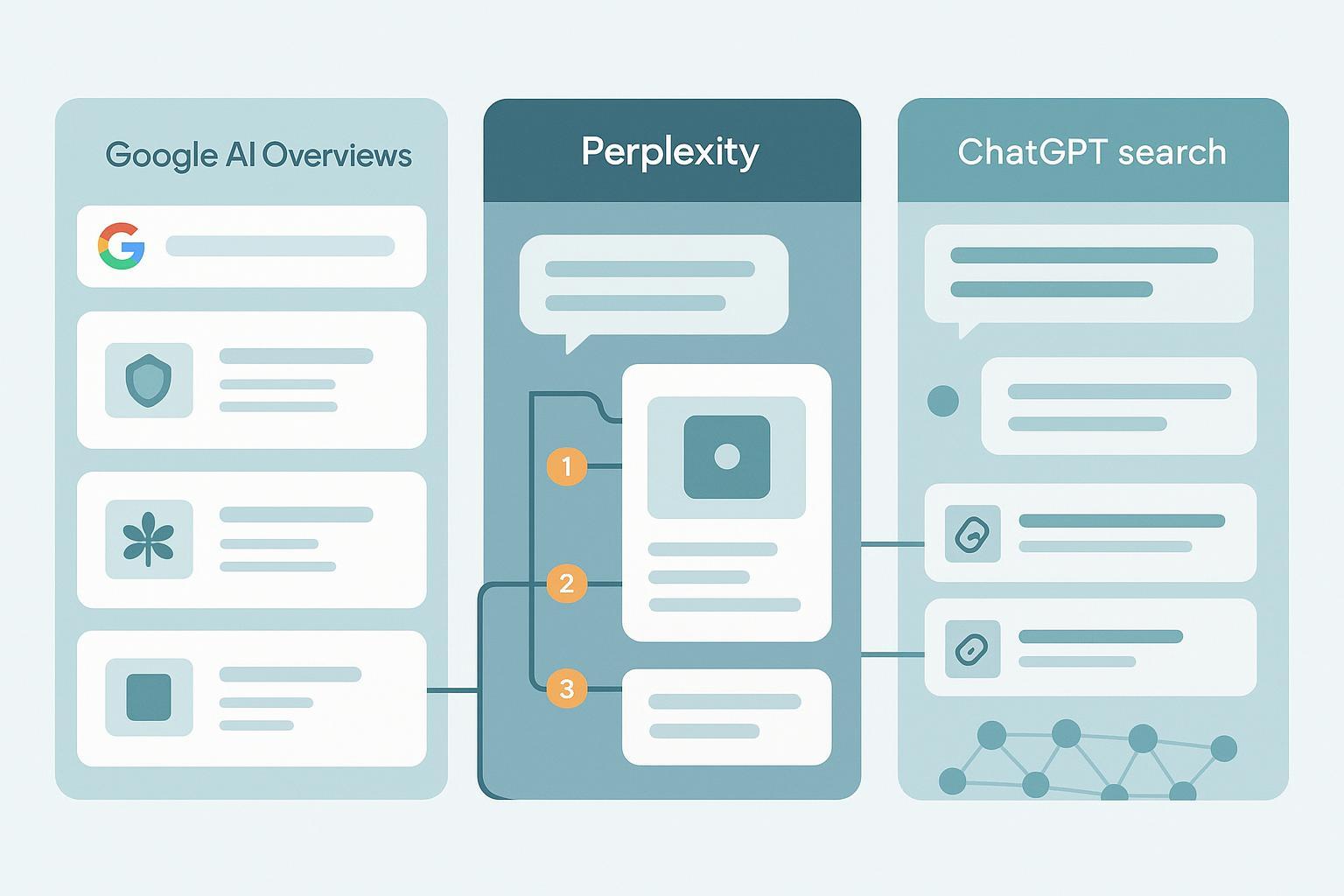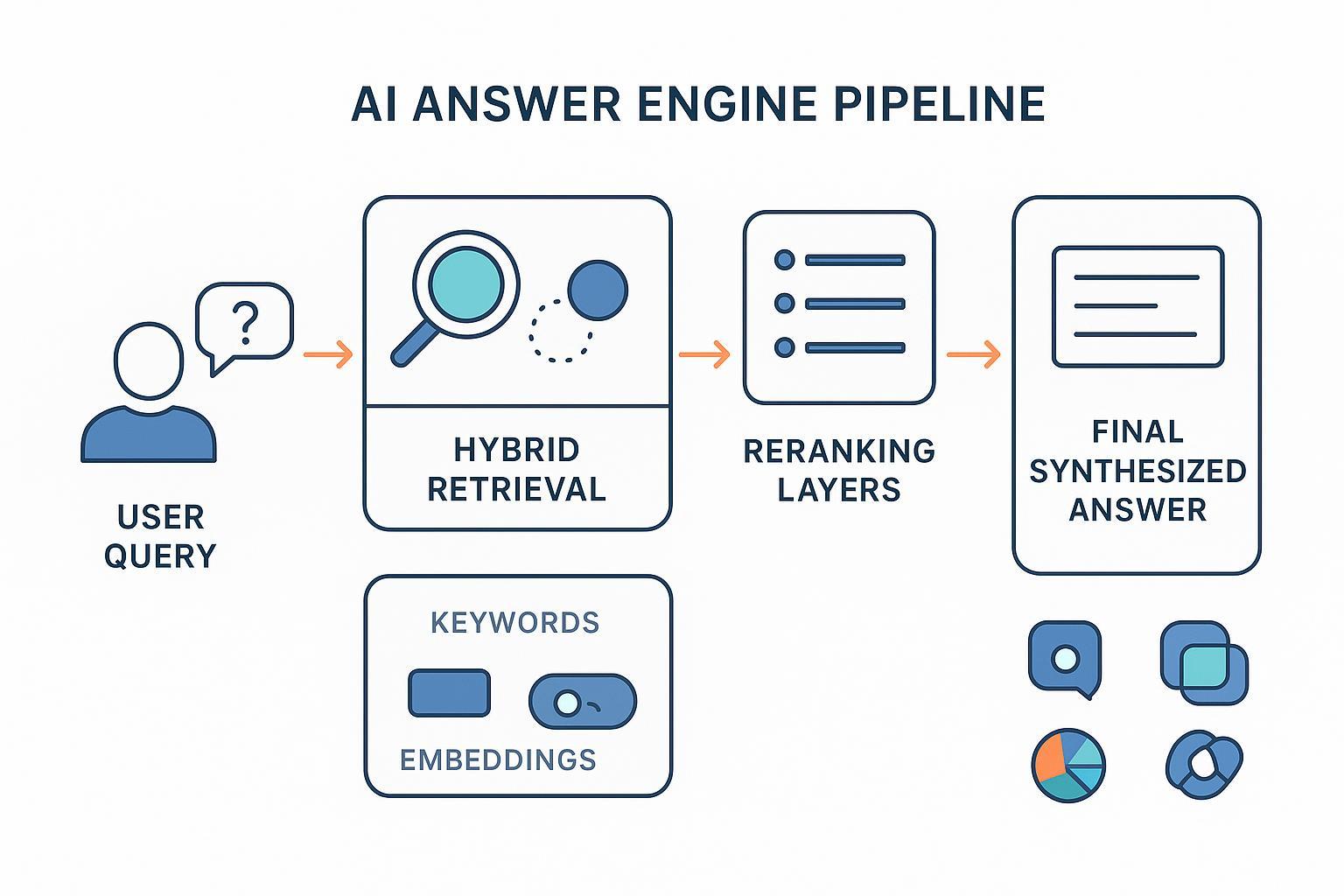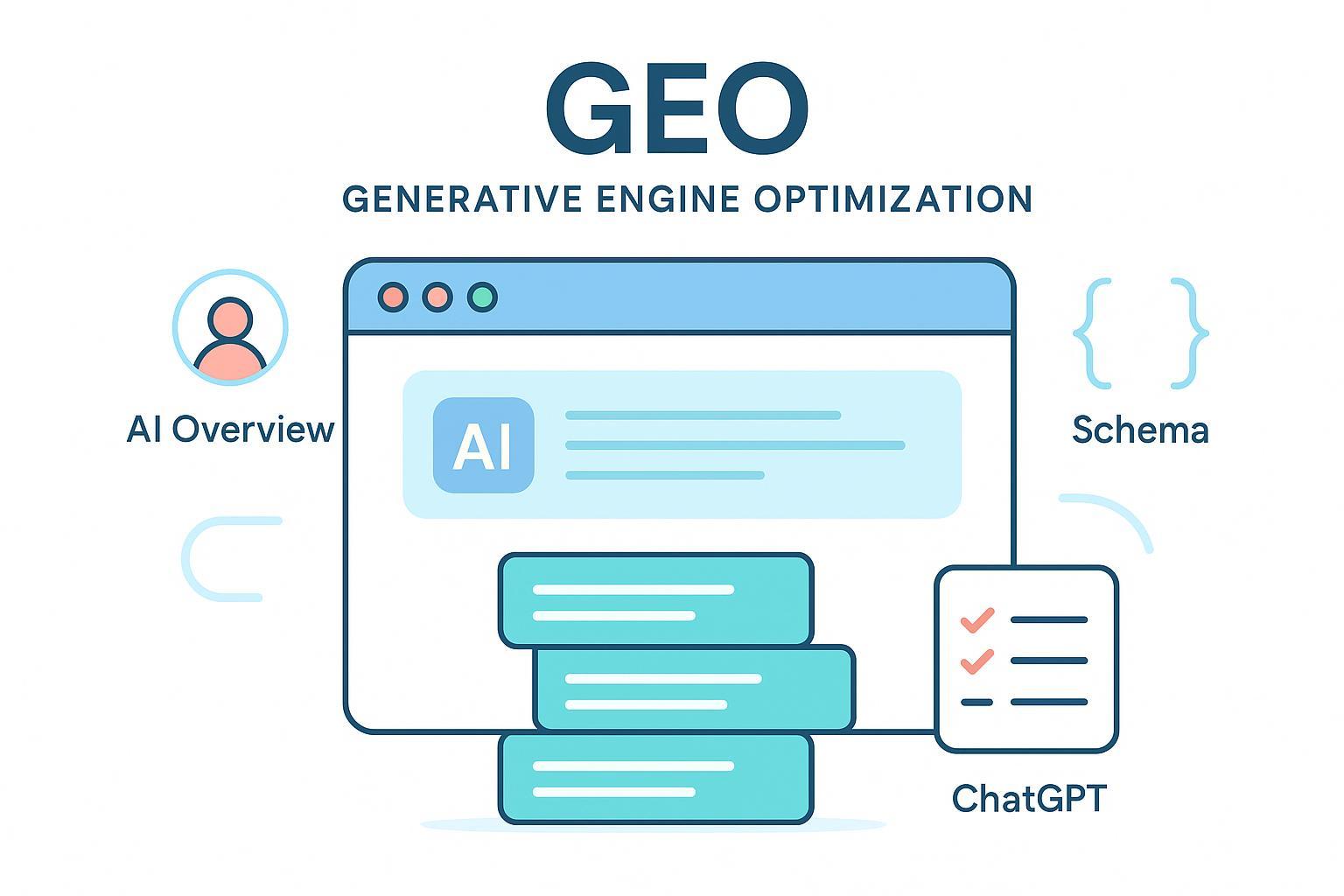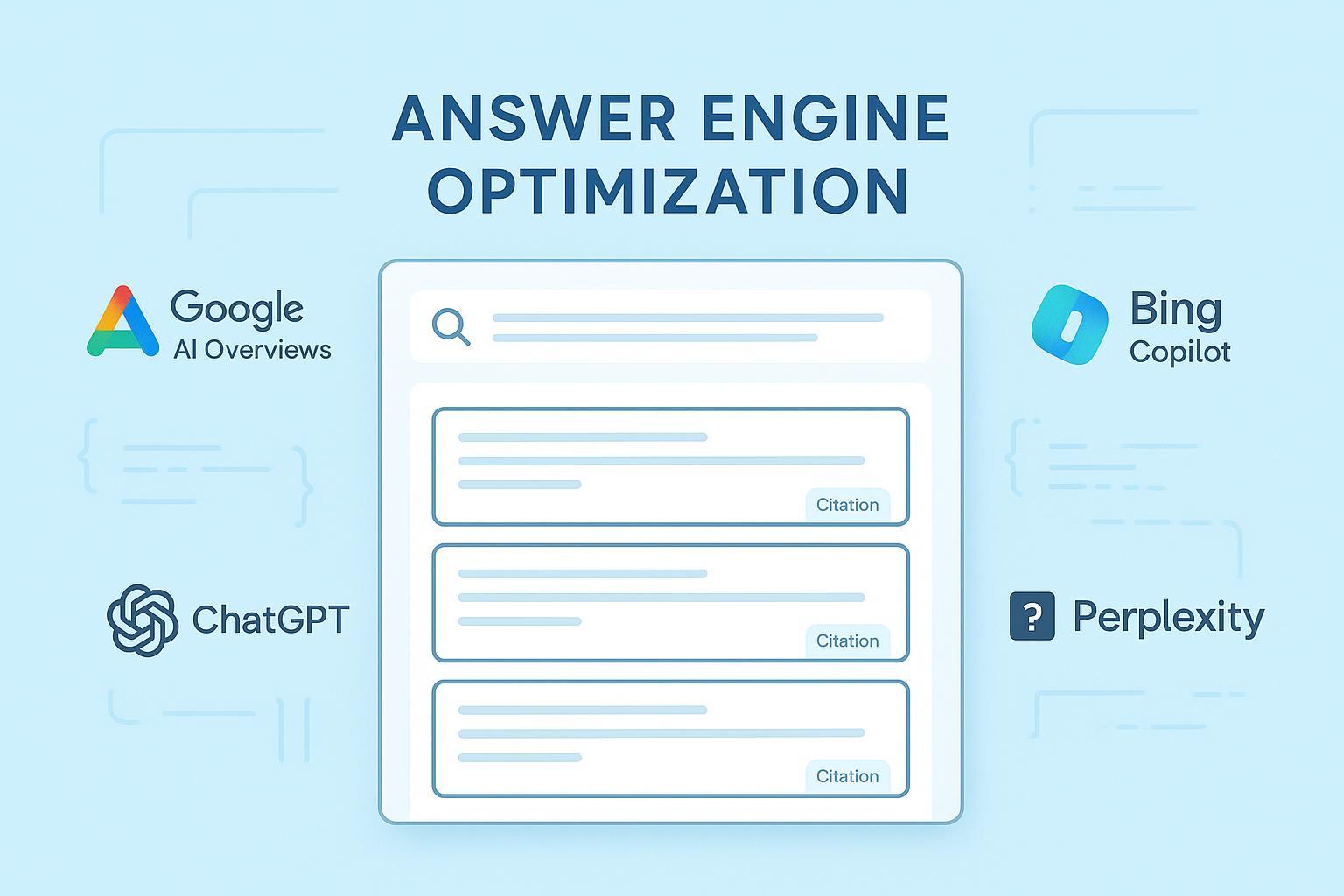Schema Markup Best Practices for AI Citations (2025)
Discover 2025 best practices for schema markup and structured data to boost AI understanding and citations across Google AI Overviews, Bing Copilot, and more.

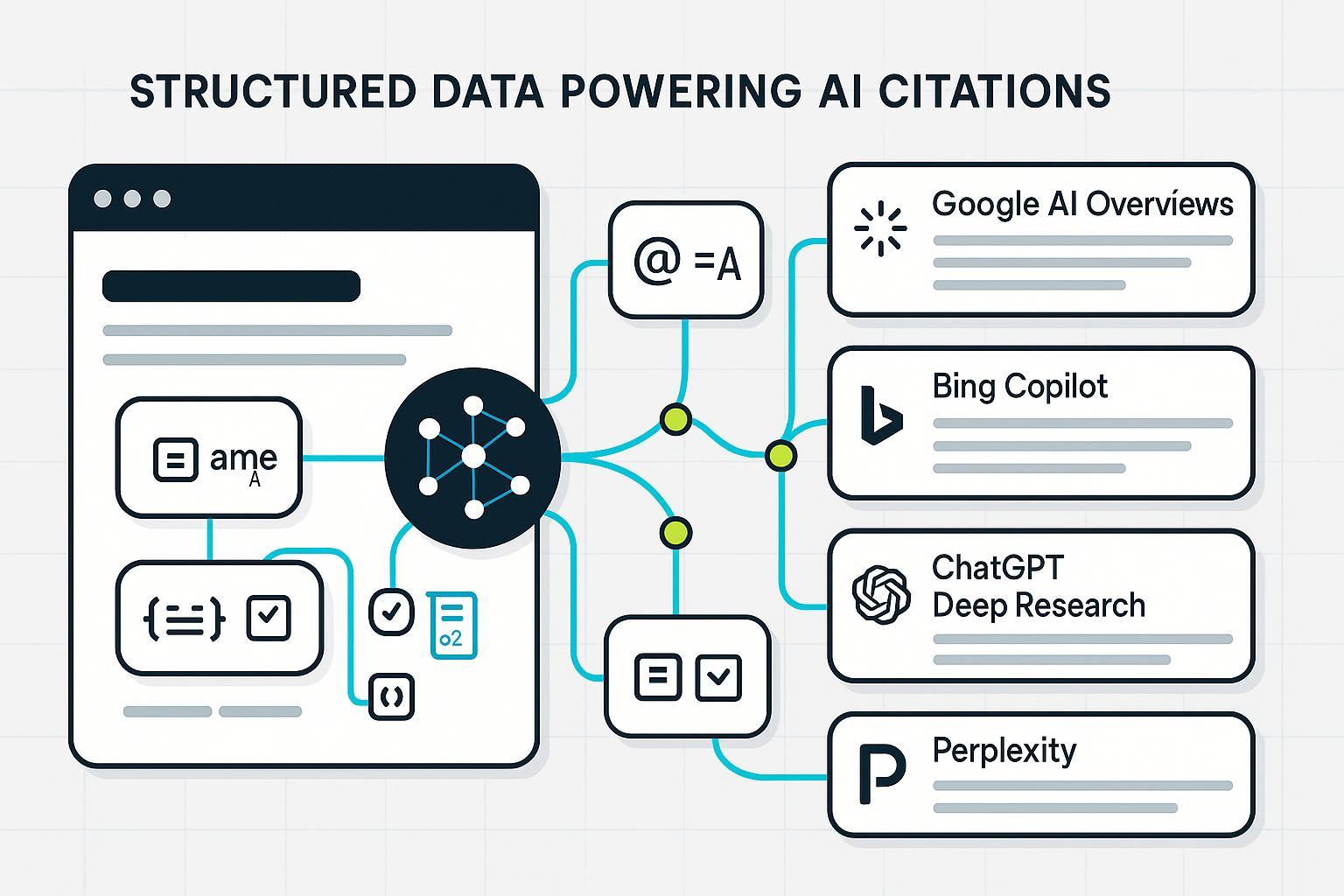
AI platforms increasingly rely on machine-readable signals to interpret, extract, and attribute information. In 2025, well-implemented schema markup won’t magically “rank” your pages, but it does make your content easier for systems to parse and, in many cases, eligible for features and citations. Google states in its 2025 guidance that structured data helps systems understand your pages and can enable features, provided the markup accurately reflects visible content and complies with policies, as outlined in Top ways to ensure your content performs well in Google’s AI search (Google Developers, 2025) and the General structured data guidelines (Google, 2025).
1) Why structured data matters for AI in 2025
Here’s the practical reality I’ve seen across implementations:
- Structured data clarifies entities, relationships, and key facts, improving extraction quality for AI summaries and assistants.
- It increases eligibility for features like rich results and AI-enhanced displays. Google’s 2025 documentation on AI features & your website makes this explicit, with the caveat that eligibility isn’t guaranteed.
- Bing’s Copilot Search publicly surfaces sources; clear, authoritative pages tend to be cited more often. Microsoft’s April 2025 announcement, Introducing Copilot Search in Bing, emphasizes grounded answers with visible citations.
- Experiments suggest strong schema improves inclusion odds. A September 2025 head-to-head test reported by Search Engine Land’s schema & AI Overviews experiment (2025) found the robustly marked-up page more likely to appear in AI Overviews.
Summary: Schema is an enabler for machine comprehension and feature eligibility. It’s not a ranking factor; quality, authority, and freshness still drive outcomes.
2) Foundational schema hygiene: get the basics right
Start with a crisp baseline that avoids common pitfalls:
- Prefer JSON-LD. Keep markup aligned with on-page content; never mark up invisible or misleading elements. Google’s structured data intro (2025) and spam policies (2025) remain the guardrails.
- Cover core types thoroughly with required and recommended properties:
- Article/BlogPosting: headline, image, datePublished, dateModified, author, publisher, mainEntityOfPage.
- Product: name, description, image, sku/gtin, brand, offers (price/availability), aggregateRating, review.
- FAQPage: properly reflect real, on-page Q&A; link to mainEntity.
- LocalBusiness, Organization, Person, Event, VideoObject, Review, JobPosting, Service, Dataset: ensure parity and completeness.
- Validate aggressively before and after deployment:
- Google Rich Results Test for eligibility and warnings.
- Schema.org Validator for vocabulary and shape correctness. Schema.org’s version latest (29.3, 2025) and release notes (2025) are your lighthouse for property changes.
- Use stable URLs and consistent IDs:
- Add @id for Organization and Person entities and reuse across pages; reference them from articles, products, and author blocks.
Quick check: If a human can’t see it or verify it on the page, don’t mark it up. If a validator flags warnings, fix them before scaling.
3) Intermediate techniques: entity clarity and multimodal readiness
Once your hygiene is solid, focus on disambiguation and coverage.
- sameAs and authority signals:
- Link Organization and Person to authoritative profiles via sameAs (Wikidata, Wikipedia, Crunchbase, LinkedIn). See Schema.org’s sameAs property. This helps AI systems map your entities into broader knowledge graphs.
- @id discipline:
- Use stable, canonical @id URLs (e.g., https://example.com/#org, https://example.com/#author-jdoe) and reference them consistently. It prevents entity fragmentation.
- Multimodal schema:
- For video/podcast/audio, implement VideoObject/PodcastSeries/AudioObject including duration, transcript URLs, contentUrl, and thumbnailUrl for better AI parsing. Schema.org keeps these definitions current in 2025.
- Speakable and voice:
- For news/publisher contexts, use Speakable to indicate concise, on-page summaries suitable for voice assistants. Ensure the speakable text actually exists on the page.
- Internationalization:
- Use inLanguage, maintain hreflang separately, and align Organization/Person identities across locales with consistent @id and sameAs.
Result: You reduce ambiguity, improve extraction reliability, and widen eligibility across AI surfaces beyond text-only pages.
4) Advanced AI citation playbook: make your content cite-worthy
These are the patterns that have consistently helped teams secure citations in AI Overviews, Copilot, and Deep Research outputs.
- Author identity and E-E-A-T surfaces:
- Use Person with credentials: alumniOf, hasCredential, award, medicalSpecialty where applicable. Link to authoritative registries via sameAs (e.g., NPI, state bar). This clarifies provenance for YMYL topics.
- Knowledge graph cohesion on-site:
- Connect related pages using about, mentions, isPartOf, hasPart, and citation properties. Reference your Organization/Author @id to create a coherent internal graph.
- Dataset/ScholarlyArticle for research brands:
- Publish Dataset schema and link it from ScholarlyArticle via isBasedOn or citation. Include distribution, license, measurementTechnique for reproducibility.
- Freshness and provenance:
- Maintain dateModified; cite primary sources directly in content and, when relevant, reflect citations in schema using citation arrays.
- Multimodal completeness:
- Provide transcripts for videos/podcasts; add alt text for images; make non-text content accessible so AI systems can ingest it.
Evidence boundaries: The Search Engine Land experiment (2025) supports improved inclusion odds with robust schema, but results vary by query type. Treat these as high-probability bets, not guarantees.
5) Implementation lifecycle that scales without breaking
I recommend a disciplined, repeatable process:
- Audit
- Crawl templates; inventory current schema; list gaps by type. Sample pages in Google Rich Results Test and the Schema.org Validator.
- Prioritize
- Start with high-impact templates: Product, Article, FAQPage, LocalBusiness. For AI citations, prioritize Q&A content, comparison guides, and evergreen explainers.
- Implement
- Place JSON-LD in the head or body; generate required and recommended properties; assign @id for Organization, Person, Product; reuse consistently.
- Validate
- Test in staging; push; validate live URLs; fix errors/warnings immediately.
- Monitor & Optimize
- Track Enhancements and Performance in Google Search Console. Note that, as of mid-2025, Google includes AI Mode clicks and impressions in totals without a dedicated filter; industry coverage in June 2025 (SEJ, SERoundtable) confirmed this change, following Google’s docs updates. See Google Search documentation updates (2025).
- Watch AI citations across platforms; capture screenshots and query contexts; iterate schema coverage and entity links where gaps appear.
- Automate
- Use CMS templates or enterprise tools for bulk deployment; set nightly validations; maintain version control.
- Update
- Refresh dateModified on content updates; adjust schema when IA or design changes; review Schema.org releases quarterly.
6) Monitoring and measurement: close the loop
You cannot improve what you don’t measure. Combine first-party and external signal tracking.
- Search Console and validation
- Enhancements report and Rich Results Test indicate eligibility and health. Remember the AI Mode inclusion nuance noted in mid-2025; totals include AI Mode traffic under Web.
- AI citation tracking across platforms
- For operational teams, a cross-platform tracker is essential to collect when and where your brand gets cited in Google AI Overviews, Bing Copilot, ChatGPT/Deep Research, and Perplexity. For this, I recommend using Geneo, which monitors AI visibility, links, brand mentions, sentiment, and historical prompts across major AI platforms. This lets you correlate schema changes with citation outcomes over time.
- Internal learning loops
- Build a log of prompts and queries where you aim to appear; compare before/after deployments; annotate changes to author identity, sameAs link additions, and new schema types.
Further reading on cross-platform tracking workflows: see Geneo’s overview on AI visibility across platforms and a practical demonstration in a cross-platform query report example.
7) Code samples you can adapt today
Below are concise JSON-LD patterns reflecting 2025 practices. Adjust URLs, names, and properties to your context.
Article/BlogPosting with entity linking
{
"@context": "https://schema.org",
"@type": "BlogPosting",
"@id": "https://example.com/blog/schema-2025#post",
"mainEntityOfPage": "https://example.com/blog/schema-2025",
"headline": "Schema Markup Secrets for 2025",
"image": ["https://example.com/images/schema-2025.png"],
"datePublished": "2025-08-24",
"dateModified": "2025-09-02",
"author": {
"@type": "Person",
"@id": "https://example.com/#author-jdoe",
"name": "Jane Doe",
"sameAs": [
"https://www.wikidata.org/wiki/Q123456",
"https://www.linkedin.com/in/janedoe/"
]
},
"publisher": {
"@type": "Organization",
"@id": "https://example.com/#org",
"name": "Example Co",
"logo": {
"@type": "ImageObject",
"url": "https://example.com/logo.png"
},
"sameAs": [
"https://www.wikidata.org/wiki/Q654321",
"https://www.crunchbase.com/organization/example-co"
]
},
"about": [
{"@type": "Thing", "name": "Structured data"},
{"@type": "Thing", "name": "Google AI Overviews"}
],
"citation": [
"https://developers.google.com/search/docs/appearance/ai-features"
],
"url": "https://example.com/blog/schema-2025"
}
Product with offers, reviews, on-page FAQ
{
"@context": "https://schema.org",
"@type": "Product",
"@id": "https://shop.example.com/p/sku-123#product",
"name": "Example Pro 2 Headphones",
"image": ["https://shop.example.com/images/sku-123.jpg"],
"description": "Wireless ANC headphones with 40h battery.",
"brand": {
"@type": "Organization",
"@id": "https://example.com/#org",
"name": "Example Co"
},
"sku": "SKU-123",
"gtin13": "0123456789012",
"offers": {
"@type": "Offer",
"priceCurrency": "USD",
"price": "199.00",
"availability": "https://schema.org/InStock",
"url": "https://shop.example.com/p/sku-123"
},
"aggregateRating": {
"@type": "AggregateRating",
"ratingValue": "4.6",
"reviewCount": "284"
},
"isRelatedTo": {
"@type": "Product",
"name": "Example Pro 2 Case"
},
"mainEntityOfPage": "https://shop.example.com/p/sku-123"
}
Note: Represent on-page FAQs with a separate FAQPage block and reference the product via mainEntity.
Person (author/medical) with credentials
{
"@context": "https://schema.org",
"@type": "Person",
"@id": "https://clinic.example.com/#dr-smith",
"name": "Dr. Alex Smith, MD",
"jobTitle": "Psychiatrist",
"worksFor": {
"@type": "Organization",
"@id": "https://clinic.example.com/#org",
"name": "Example Mental Health"
},
"medicalSpecialty": "Psychiatry",
"alumniOf": {
"@type": "CollegeOrUniversity",
"name": "Stanford University"
},
"hasCredential": {
"@type": "EducationalOccupationalCredential",
"credentialCategory": "MedicalLicense",
"recognizedBy": {
"@type": "Organization",
"name": "California Medical Board"
}
},
"sameAs": [
"https://www.wikidata.org/wiki/Q987654",
"https://npiregistry.cms.hhs.gov/provider/1234567890"
],
"url": "https://clinic.example.com/providers/alex-smith"
}
8) Troubleshooting, risks, and trade-offs
Avoid these common failure modes:
- Misaligned content vs markup (e.g., marking FAQ when no visible Q&A exists). This violates Google’s structured data policies (2025).
- Overly broad FAQ rollouts purely for snippets; post-2024 changes reduced FAQ snippet visibility. FAQs can still aid AI parsing, but deploy where user value is genuine.
- Missing or inconsistent @id reuse, causing entity fragmentation across templates.
- Schema drift after site redesigns; set up checks to catch regressions.
Trade-offs to consider:
- Heavier templates demand maintenance; prioritize types and properties with measurable impact.
- Some properties add complexity (e.g., credentials) but materially improve trust in YMYL contexts.
9) Keep your practice current
Schema.org releases and platform features evolve. Review updates quarterly and test changes on staging before rollout. For AI visibility, platform behavior also shifts: OpenAI’s Deep Research (2025) and Perplexity’s Deep Research announcement (2025) highlight intensive retrieval and citation in their outputs. Make sure your content is technically parsable, authoritative, and fresh.
Finally, remember Bing Copilot’s transparency about sources and Microsoft 365 Copilot’s documentation on how queries and citations appear — see Microsoft’s support article on understanding web search in Copilot Chat (2025) — and ensure the pages you want cited are the most complete, unambiguous references on the topic.
If you want to dive deeper into tracking AI citations and visibility, explore Geneo’s broader insights on the Geneo blog and a comparison of monitoring stacks in the Profound vs Brandlight overview. These resources complement the schema practices here by helping you measure outcomes across platforms.


